#buddhism in bhutan
Text
Discover Happiness in Bhutan: Applying Buddhist Values through Meditation | Daily Bhutan
Explore the serene realm of Bhutan and unlock the secrets to true happiness through meditation. Immerse yourself in Buddhist values that shape a fulfilling life. Read more on Daily Bhutan for a journey to inner peace and joy.
0 notes
Photo

Gangtey, 2018
#picoftheday#travel#bhutan#original photographers#photographers on tumblr#masked man#mask#tsechu#street photography#street portrait#religion#buddhism#photooftheday
186 notes
·
View notes
Text

Unlock the gateway to Bhutan's wonders with our curated collection of the Best Bhutan Tour Packages. Immerse yourself in the allure of this mystical kingdom, where ancient traditions meet breathtaking landscapes.
From cultural escapades that unveil the heart of Bhutan's heritage to nature explorations that lead you through verdant valleys and towering peaks, our tour packages cater to every traveler's dreams.
Each package is thoughtfully designed to encompass the essence of Bhutan, ensuring you witness its magic in its entirety. Whether you are a solo explorer, a couple seeking romance, or a family on an unforgettable journey, we have the perfect package to make your Bhutan adventure extraordinary.
Let your wanderlust come alive with the Best Bhutan Tour Packages – your passport to a world of beauty, culture, and memories that will linger forever.
Please Visit Our Website To Know More About Bhutan www.bhutaninbound.com
#bhutantour#tourpackages#bestoftheday#bhutan#travelgirl#amazingbhutan#luxurytravel#riverrafting#exploring#familytime#foresting#bhutandiaries#activities#visitbhutan#buddhisttemple#bhutantravel#punakha#bhutanig#buddhism#asia#explore#traveller#traveldiaries#vacation
8 notes
·
View notes
Text
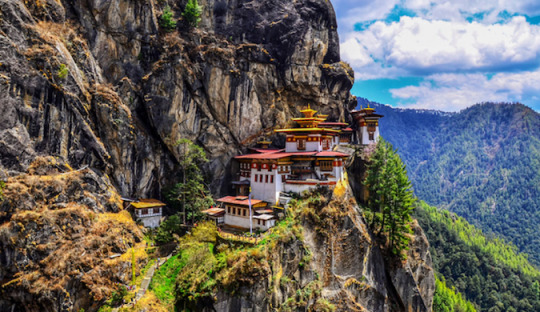
Bhutan
3 notes
·
View notes
Text

Bhutan
#punakha#bhutan#dzong#asia#travel#himalayas#himalaya#buddhism#nature#mypost#green#peaceful#history#buddhist
7 notes
·
View notes
Link
Sexual abuse in monasteries and oppressive feudalism in traditional Tibetan society has been factored out of the argument against China's occupation, oversimplifying it.
Han Chinese guards deliberately obstruct the pilgrim route through Lhasa to the holy Jokhang temple by sipping tea at strategically placed tables in the middle of the road. In front of the Potala, the Dalai Lama's former seat of power, an imposing guarded concrete square glorifies China's occupation.
Tibet seems like as a celestial paradise held in chains, but the west's tendency to romanticise the country's Buddhist culture has distorted our view. Popular belief is that under the Dalai Lama, Tibetans lived contentedly in a spiritual non-violent culture, uncorrupted by lust or greed: but in reality society was far more brutal than that vision.
Last December, Ye Xiaowen, head of China's administration for religious affairs, published a piece in the state-run China Daily newspaper that, although propaganda, rings true. "History clearly reveals that the old Tibet was not the Shangri-La that many imagine", he wrote "but a society under a system of feudal serfdom."
Until 1959, when China cracked down on Tibetan rebels and the Dalai Lama fled to northern India, around 98% of the population was enslaved in serfdom. Drepung monastery, on the outskirts of Lhasa, was one of the world's largest landowners with 185 manors, 25,000 serfs, 300 pastures, and 16,000 herdsmen. High-ranking lamas and secular landowners imposed crippling taxes, forced boys into monastic slavery and pilfered most of the country's wealth – torturing disobedient serfs by gouging out their eyes or severing their hamstrings.
Tashi Tsering, now an English professor at Lhasa University is representative of Tibetans that do not see China's occupation as worse tyranny. He was taken from his family near Drepung at 13 and forced into the Dalai Lama's personal dance troupe. Beaten by his teachers, Tsering put up with rape by a well-connected monk in exchange for protection. In his autobiography, The Struggle for Modern Tibet, Tsering writes that China brought long-awaited hope when is laid claim to Tibet in 1950.
After studying at the University of Washington, Tsering returned to Chinese-occupied Tibet in 1964, convinced that the country could modernise effectively by cooperating with the Chinese. Denounced during the Cultural Revolution, arrested in 1967 to spend six years in prison and labour camps, he still maintains that Mao Tse-Tung liberated his people.
Caught between a system reminiscent of medieval Europe and a colonial force that brought forced collectivisation and similar human rights abuses, Tibet moved from one oppressive regime to another.
During the 1990s, Tibetans suspected of harbouring nationalist tendencies were arrested and imprisoned and in 2006, Romanian climbers witnessed Chinese guards shooting a group of refugees headed for the Nepalese border. China's abhorrent treatment of "political subversives" has rightly spurned a global Free Tibet movement, diminishing the benefits that it did bring to society.
After 1959, it abolished slavery, serfdom and unfair taxes. Creating thousands of jobs through new infrastructure projects, it built Tibet's first hospitals and opened schools in every major village, bringing education to the masses. Clean water was pumped into the main towns and villages and the average life expectancy has almost doubled since 1950, to 60.
Even so, in 2001 the Dalai Lama said: "Tibet, materially, is very, very backward. Spiritually it is quite rich. But spirituality can't fill our stomachs."
Freedom for Tibet is not simply a case of liberation from China and the reinstatement of traditional values. Around 70 per cent of the population lives below the poverty line and enhanced spirituality alone will not improve economic conditions. Poverty is not quaint no matter how colourful the culture and the Tibet question is one that should be addressed from a rational, rather than an idealised viewpoint.
Nearby Bhutan, which has a similar Buddhist culture that it tried to preserve by banning television until 1999 and limiting foreign visitors, only held its first democratic elections in 2007. The Dalai Lama now promotes democracy, but Tibet may well have looked worse than it does today if the old order had been left to its own devices.
#tibet#china#human rights#world news#law#article#feudalism#chattel slavery#slavery#dali lama#free tibet#chairman mao#history#1990s#1950s#Bhutan#buddhism#Mao Tse-Tung#asia
8 notes
·
View notes
Text








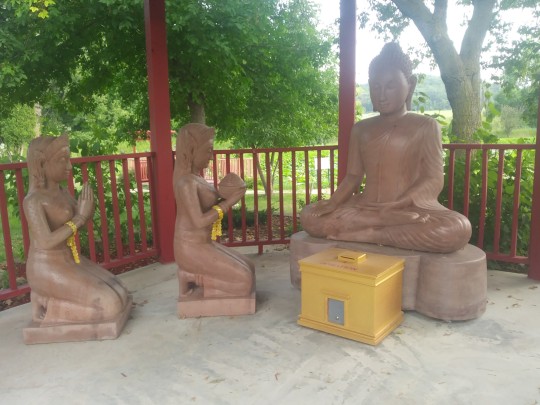
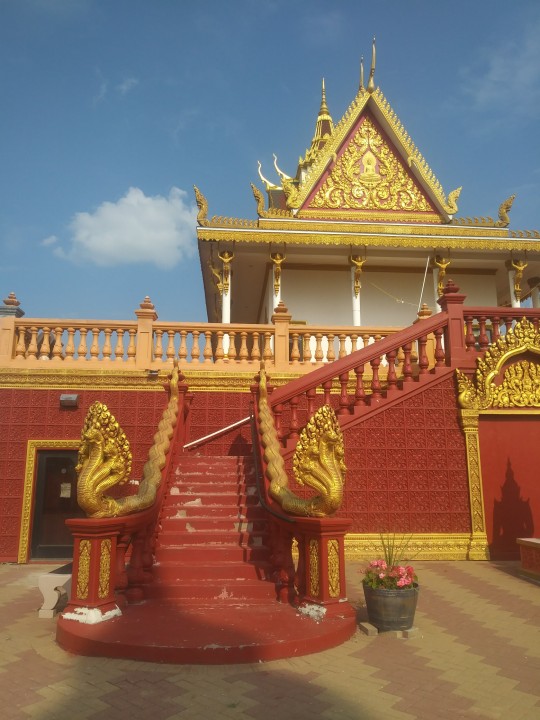
#buddhism#watt munisotaram#sooo freaking pretty and peaceful#second temple visit#prepping for my bhutan trip :))))#minnesota
2 notes
·
View notes
Text
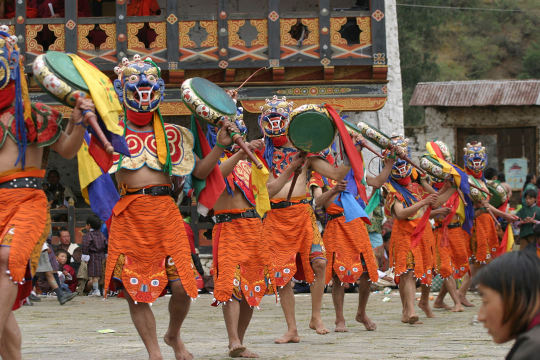
Masked cham dancers with tiger aprons at a Buddhist monastery in Bhutan, 2010. Unidentified photographer
6 notes
·
View notes
Text
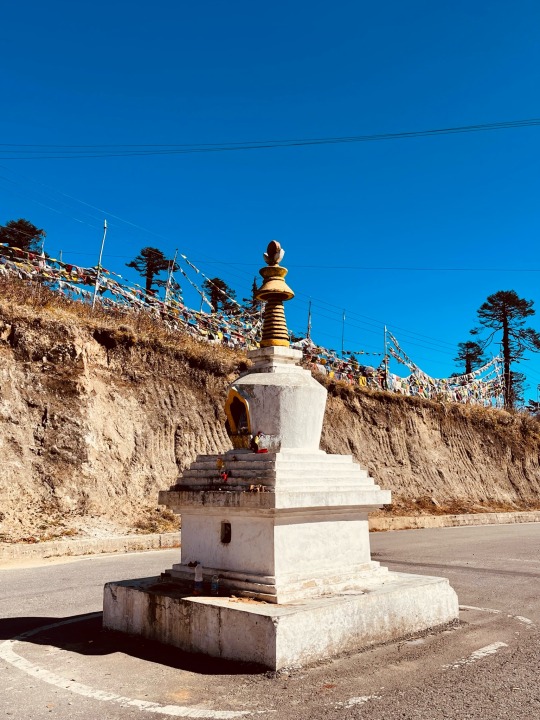

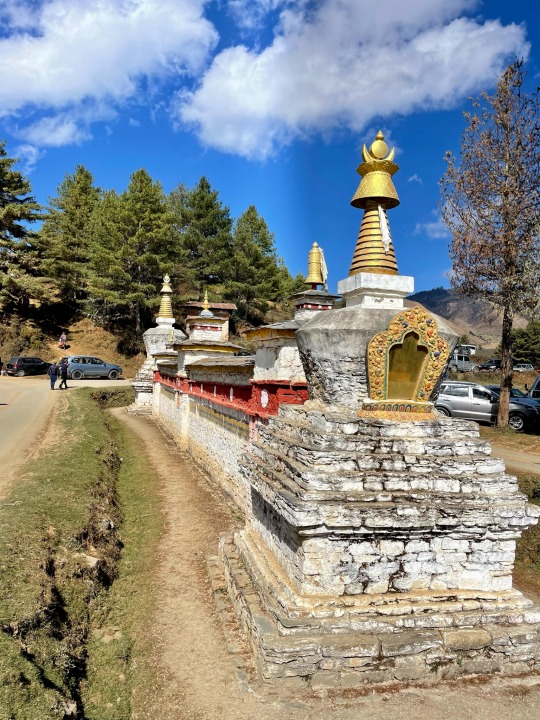
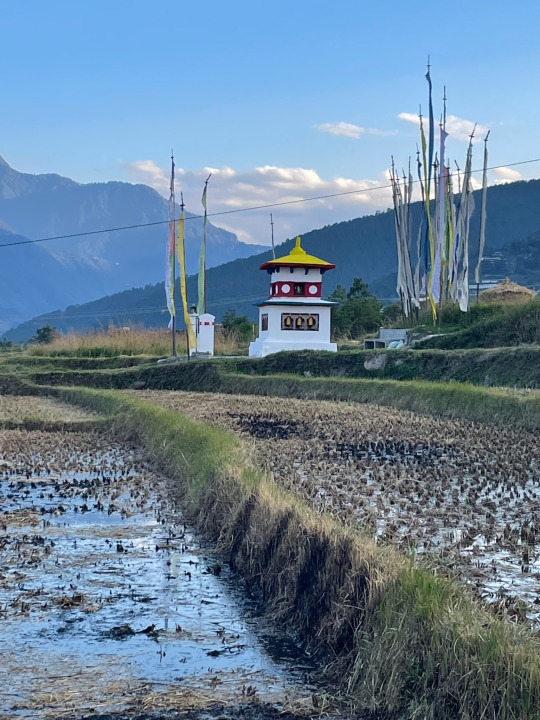
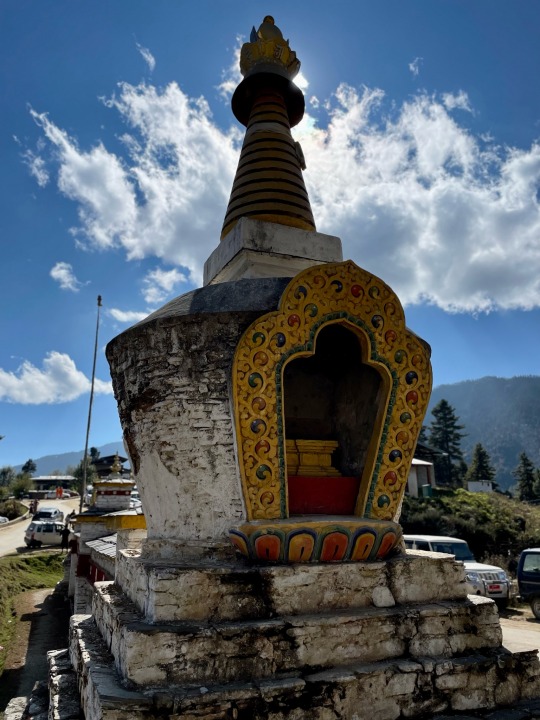
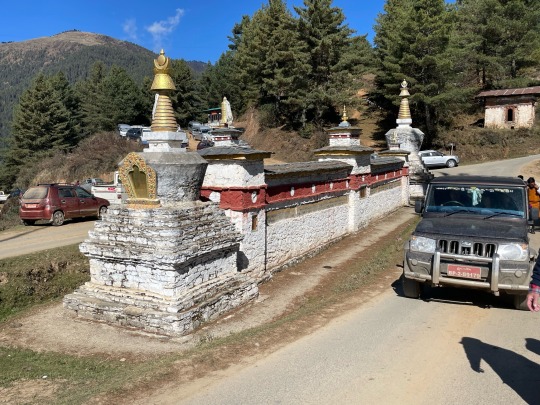

Des stupas en veux tu en voila…
#stupa#traveler#travel blog writer#travelblogger#bhutan#travel#greentravel#ritual#shaman#travelphotography#bhoutan#buddhism#nature#trekking#blog#buddha
9 notes
·
View notes
Text
Happy Lhabab Düchen!
Today the Buddhists following the Tibetan tradition celebrate Lhabab Düchen ( ལྷ་བབས་དུས་ཆེན་).
Lhabab Düchen is one of the four Buddhist festivals commemorating four events in the life of the Buddha (the other three are: Losar Festival, Saga Dawa Festival, Chokor Duchen Festival), in the Tibetan Buddhist tradition, that I follow.
Lhabab Düchen occurs on the 22nd day of the ninth lunar month…
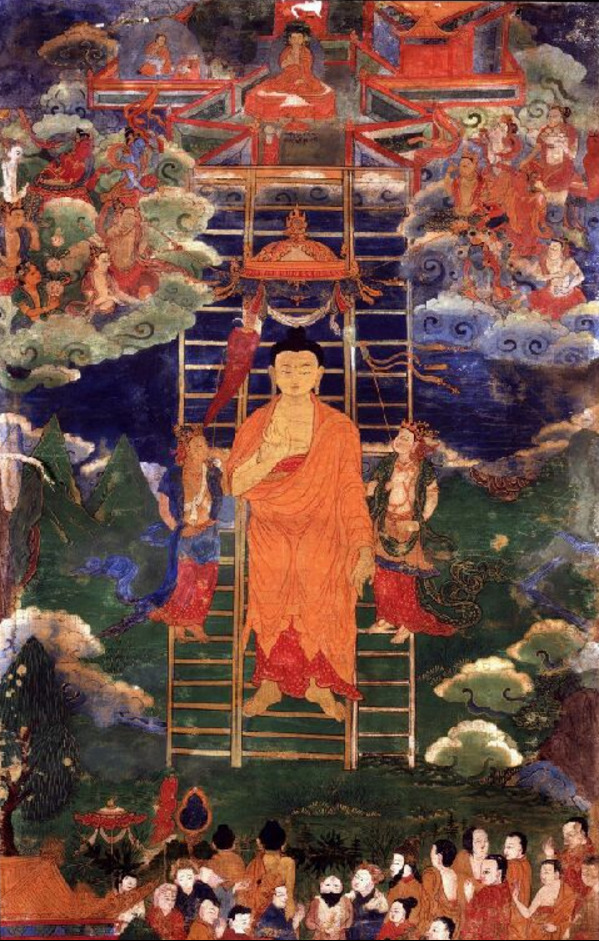
View On WordPress
#Bhutan#Buddha&039;s Death#Buddha&039;s death Parinirvana#Buddhism#Celebration#Earth#heaven#Indra#Indra’s heaven#Laos#Lhabab Düchen#Maudgalyayana#Mayadevi#Miracle at Sravasti#Myanmar#Nalagiri#parinirvana#Sri Lanka#Tavatimsa#Thailand#the Birth of the Buddha#the Descent from Tavatimsa Heaven#the Enlightenment#the First Sermon#the Monkey&039;s offering of honey#the Taming of Nalagiri the elephant#Tibet#Tibetan Buddhism#triple ladder#Viswakarma
9 notes
·
View notes
Text
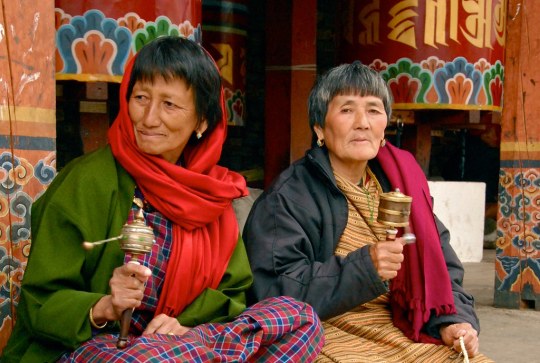
#IFTTT#Flickr#bhutan#asia#thimphu#persone#people#gentes#gente#portrait#ritratto#colori#colors#buddismo#buddhism#buddha#preghiera#prayerwheel#donne#women#street#strada#streetportrait
8 notes
·
View notes
Text
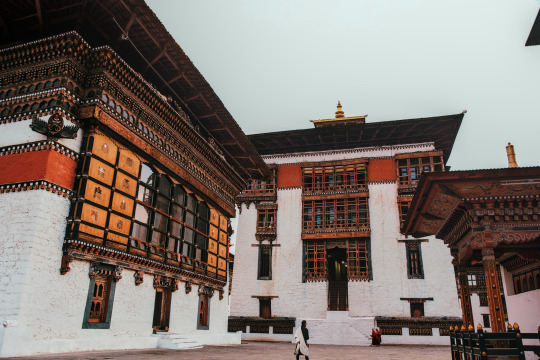
Tashichho Dzong - Thimphu, 2018
#picofthenight#travel#bhutan#original photographers#photographers on tumblr#ancient architecture#buddhist monastery#religion#buddhism#religious architecture#landscapes#photoofthenight
16 notes
·
View notes
Text

Escape to the Enchanting Kingdom of Bhutan! Immerse yourself in a cultural extravaganza with our exclusive Bhutan holiday package. From ancient monasteries nestled in the Himalayas to vibrant festivals that showcase Bhutan's rich heritage, this tour is a gateway to unforgettable experiences. Explore the charming streets of Paro, hike to the iconic Tiger's Nest monastery, witness the masked dances of the famous Tsechu festival, and indulge in authentic Bhutanese cuisine. Let the serene landscapes and warm hospitality of Bhutan captivate your heart. Book your Bhutan cultural tour today and embark on a journey of discovery and enchantment!
Please Visit Our Website To Know More About Bhutan www.bhutaninbound.com
#bhutantour#culturaltour#cultural#Bhutan#himalayas#bhutantravel#FestivalCultural#tsechufestival#bhutantourism#punakha#travelbhutan#amazingbhutan#buddhism#buddhist#punakhadzong#bhutanculture#happiness#culturetour#culturecelebration#himalayanculture#visitbhutan#buddhistwisdom#buddhistmonk
2 notes
·
View notes
Text
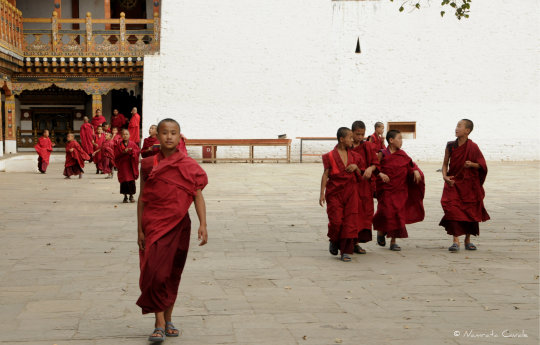




Bhutan | May 2011
#bhutan#gross national happiness#kingdom of bhutan#monastery#buddhism#dzongka#gho#punakha#monks#monk series#prayer wheel#documenting life
2 notes
·
View notes
Photo

Stupa . #travel #nepal #buddhist #buddhism #buddha #bhutan #myanmar #himalayas #adventure #wanderlust #travelgram #asia #travelphotography #bhutantourism #kathmandu #buddhalove #burma #temple #travelblogger #bhutandiaries #clouds #compassion #consciousness #explore #madhyapradesh #kindness #heritage #india #trek #dharma https://www.instagram.com/p/CmiJOEPyJKG/?igshid=NGJjMDIxMWI=
#travel#nepal#buddhist#buddhism#buddha#bhutan#myanmar#himalayas#adventure#wanderlust#travelgram#asia#travelphotography#bhutantourism#kathmandu#buddhalove#burma#temple#travelblogger#bhutandiaries#clouds#compassion#consciousness#explore#madhyapradesh#kindness#heritage#india#trek#dharma
2 notes
·
View notes